8 Ways to Ensure a Bird-Safe Backyard
Updated: Jan. 11, 2022
Keep your feathered friends healthy and happy with clean bird feeders, fresh birdseed and a natural yard free of pesticides.
Our editors and experts handpick every product we feature. We may earn a commission from your purchases.
A lot of planning, time and money go into attracting and feeding backyard birds. But making your space appealing to them with food and plants they love is only one part of the equation. You also need to ensure that birds stay safe while in your yard. With these tips, you are on your way to a bustling backyard full of feathered guests. Creating and maintaining a bird-safe yard requires a bit more work and dedication beyond simply putting up a feeder. But the peace of mind that comes with doing your part to keep birds safe is extremely rewarding.
Learn how to create the ultimate backyard wildlife and bird habitat.
1. Clean Feeders Regularly
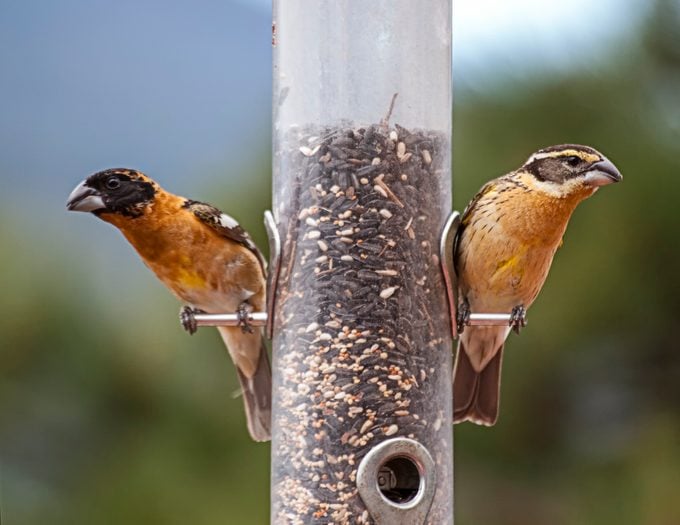
Dirty feeders can spread disease. Completely empty yours about once every two weeks, and more often in wet weather or if the food looks moldy. Take each feeder apart, then clean it thoroughly with dish soap and boiling water or a dilute bleach solution (one part bleach to nine parts water). Rinse the feeder well, dry it completely and refill with fresh seeds or other bird food. Clean hummingbird feeders and change the sugar water every three to five days.
Learn how to clean a bird bath.
2. Monitor for Bird Feeder Disease
If you see birds that look ill—watch for crusty eyes, growths on their bodies or unusual behavior — take your feeders down immediately. Clean them thoroughly and wait several weeks before you put them back up. Keep an eye out for news stories about bird epidemics in your area and follow all recommendations to protect your feathery friends.
3. Say No to Pesticides
Birding and gardening go hand-in-hand, and understanding how birds, bugs and plants benefit one another greatly enhances the rewards. As an active gardener, you probably have found bugs eating your plants and felt the urge to take action. But it’s important to know that most pesticides are nondiscriminate killers that don’t just eliminate specific bugs. Pesticides kill important pollinators, like honeybees and butterflies, as well as helpful insects like lady beetles.
Although many kinds of lawn fertilizers with weed killers are harmful to wildlife, you still should consider organic fertilizers. Building your soil with a strong combination of compost and organic fertilizers is critical. If you forgo all fertilizers, you can end up with poor plant growth, fewer bugs for birds to eat, and soil erosion as plants decline. Psst—here’s the best natural way to kill weeds.
And reducing the overall use of harsh pesticides in yards is healthier for humans, too. A pesticide-free healthy lawn is the safest option for your favorite birds, other wildlife guests, pets and even you, too!
Check out 7 natural ways to keep bees and wasps away from hummingbird feeders.
4. Use Bird Safe Glass for Windows
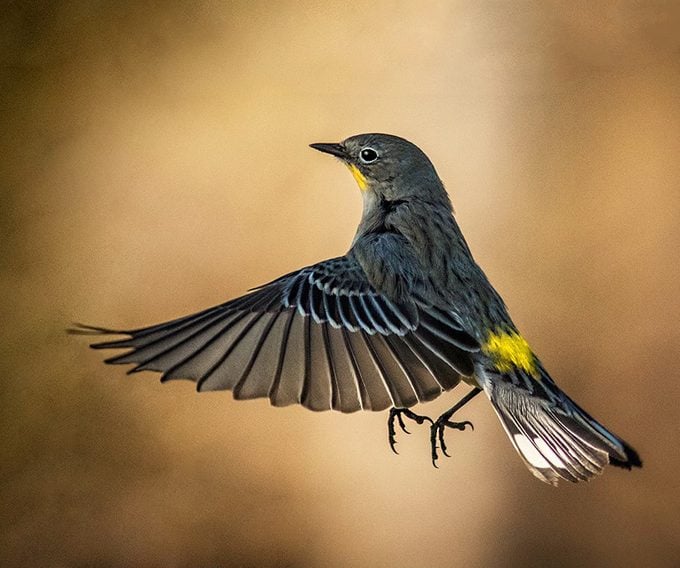
Windows pose a huge risk by reflecting the sky or trees nearby, which invites birds to fly right into them. Researchers estimate that window collisions kill up to 1 billion birds a year, especially during migration season. New data indicates there is no truly safe distance from a window to put bird feeders, so be sure to make any windows facing your feeders easy for birds to see. Deck these windows with specially designed anti-collision stickers, decals, bird tape or films that create an opaque surface outside. Or mark the window using soap in a grid pattern of 4 inches by 2 inches. Here’s more tips to prevent bird strikes on windows at home.
5. Keep Cats Indoors
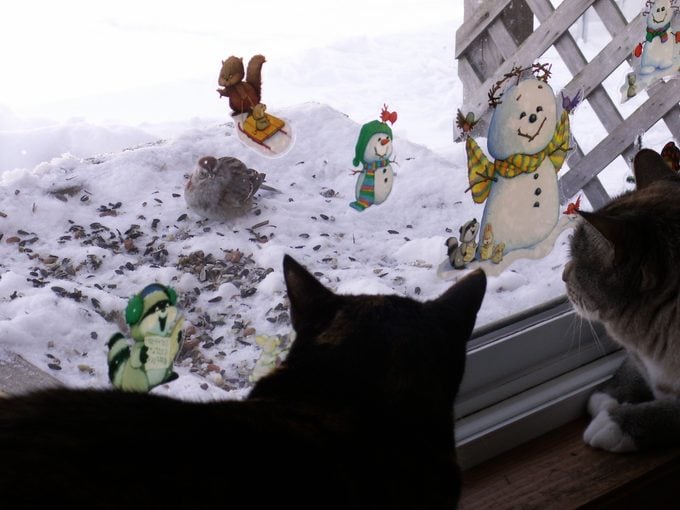
Cats are lovely and make wonderful companions. But if you love birds and enjoy feeding them, it’s best to keep your cats indoors. Studies prove the devastating impact that roaming house cats and feral cats have on birds and small mammals.
House cats are not native and also are not part of the natural ecosystem. Many people believe that a well-fed kitty wouldn’t have any reason to hunt birds, but even cared-for cats have the instinct to go after birds. Feeders and roaming cats are a lethal combination. If you have an outdoor cat, or if many strays visit your yard, it may be best if you refrain from feeding the birds, for the birds’ own safety. Or, you can create an outdoor enclosure or cat patio for your feline friend. This allows your kitty to be outdoors without being a threat to birds. Remember that, according to veterinarians, indoor cats live longer, healthier lives. So keeping your pets inside not only protects the birds, it’s also better for the cats.
6. Stop Hawks at Bird Feeders
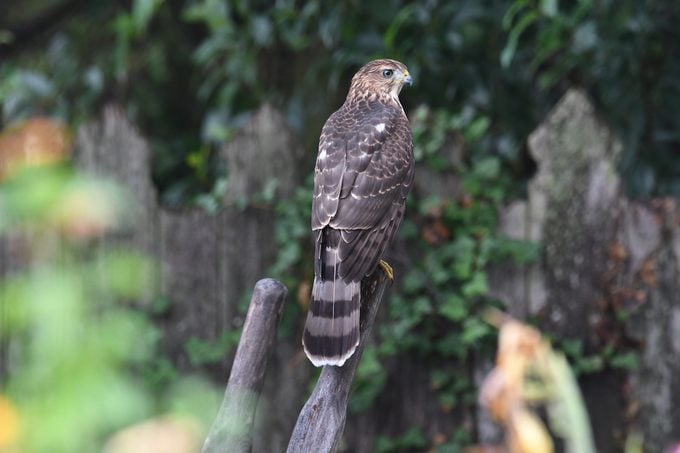
Feeders provide a quick lunch, but they also can turn diners into an easy meal for others. Add plenty of shelter nearby where backyard birds can escape when hawks circle above. Shrubs and trees are perfect choices. Foil ground predators such as foxes by hanging feeders high and using a squirrel baffle beneath. A cage-style feeder gives smaller birds an extra layer of protection while they feast. What foods do hawks eat?
7. Avoid Red Dye in Hummingbird Sugar Water
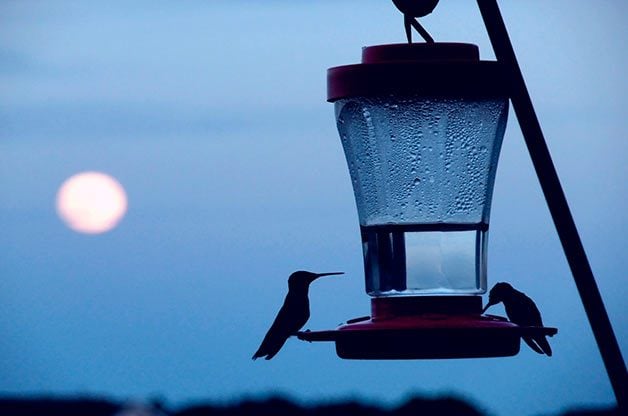
Beware: Some retailers offer hummingbird food colored with red dye. Most leading experts agree that the dye can be harmful to birds, and at the very least it’s unnecessary. The top recommendation for hummingbird food is to make it at home. Here’s the sugar water recipe. Any other kind of sweetener besides white granulated table sugar may be unsafe.
Check out 9 foods you should never feed to birds.
8. Grow Beneficial Plants and Trees
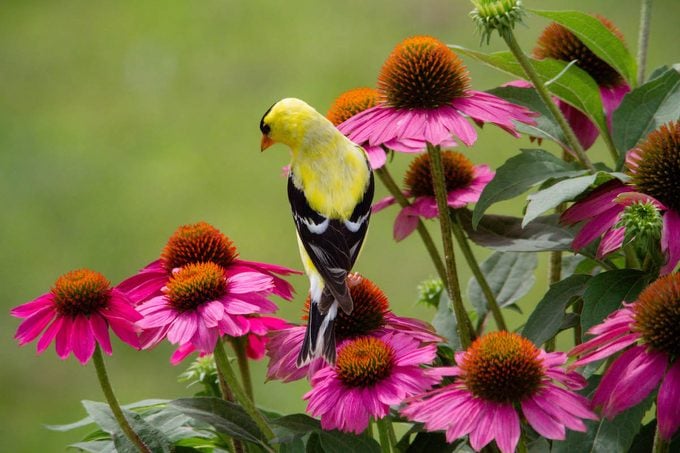
Birds rely on berries, seeds, nectar and the insects that plants attract for food. Grow native plants, shrubs and trees in your yard to attract a wider variety of birds in every season. Birds also use native trees for nesting, and evergreens provide winter shelter. Visit your local plant nursery to ask for recommendations.

